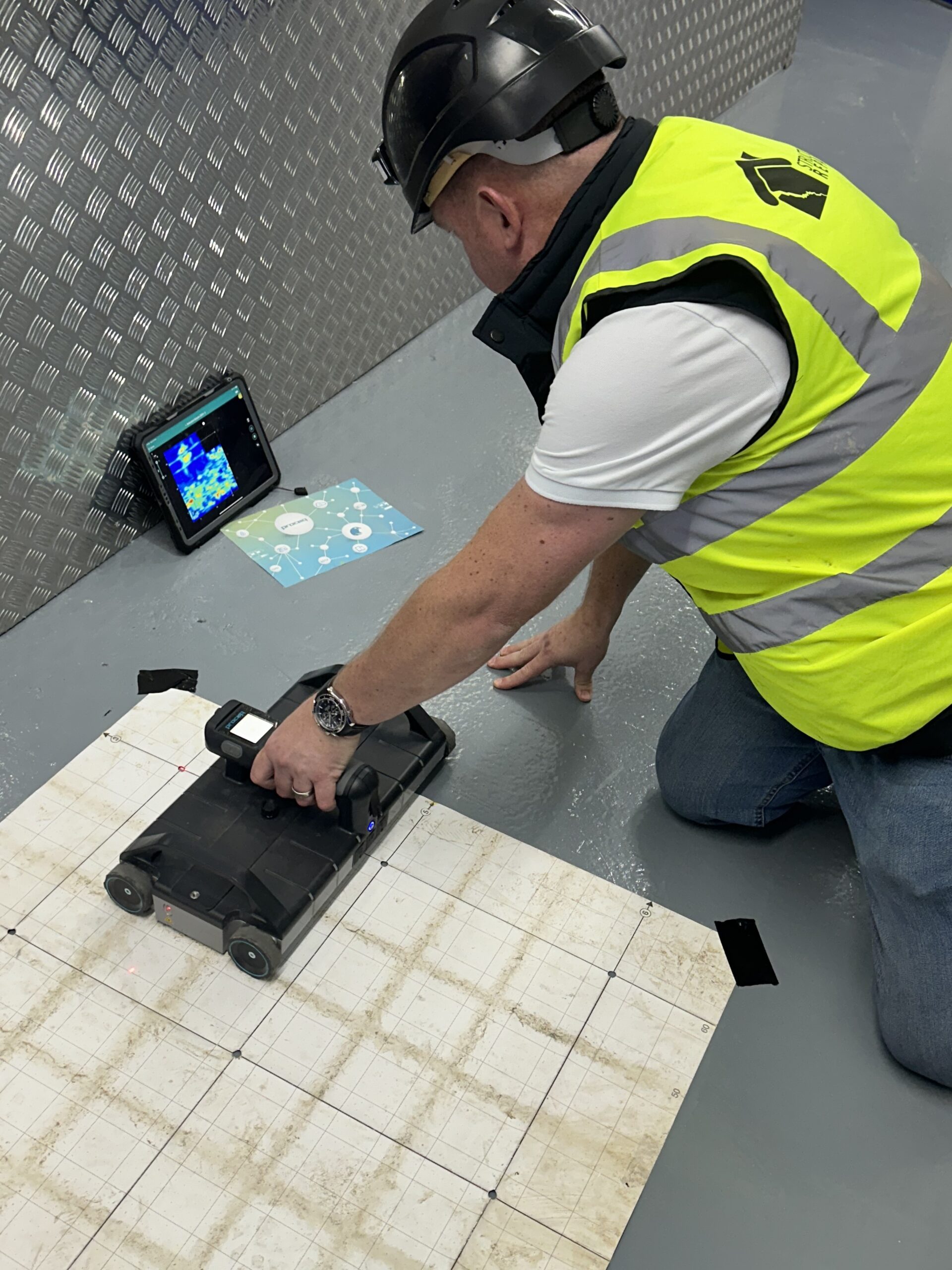In-Depth Insights into Concrete Scanning Procedures
In-Depth Insights into Concrete Scanning Procedures
Blog Article
Reveal the Transformative Power of Concrete Scanning in Optimizing Efficiency and Safety
Concrete scanning has actually arised as a crucial tool in the building and construction sector, providing unequaled benefits in improving project performance and guaranteeing safety and security standards. The transformative power of concrete scanning exists in its capability to supply real-time information and detailed understandings, changing just how tasks are intended and implemented.
Relevance of Concrete Scanning
Making certain the structural integrity and safety of construction tasks begins with the critical step of performing complete concrete scanning. Concrete scanning is a non-destructive approach made use of to identify and map subsurface components within concrete structures.
In addition, concrete scanning aids in optimizing task timelines and spending plan by avoiding unforeseen expenses and hold-ups that may occur due to unanticipated obstructions within the concrete. Eventually, investing in complete concrete scanning is a positive method that improves both efficiency and safety in building and construction tasks.
Exactly How Concrete Scanning Works
Concrete scanning runs as a critical device in building tasks by utilizing advanced technologies to identify and map subsurface components without triggering structural damages. Ground Passing Through Radar (GPR) and Electromagnetic Induction (EMI) are two main methods used in concrete scanning.
During the scanning process, the information accumulated is examined in real-time, allowing immediate recognition of potential risks or barriers underneath the surface area. This info help in decision-making, guaranteeing that building and construction activities proceed securely and successfully. Additionally, 3D imaging software program can be utilized to create thorough maps of the subsurface elements, better enhancing job planning and execution. By using these sophisticated technologies, concrete scanning significantly lowers the risk of pricey problems and injuries on building and construction sites.
Advantages of Concrete Scanning
Making use of advanced scanning technologies in building tasks offers a wide range of advantages, boosting both efficiency and safety and security on-site. One of the main advantages of concrete scanning is the capability to spot and find ingrained things such as rebar, post-tension cables, and channels precisely. By recognizing these components prior to drilling or cutting right into concrete frameworks, the danger of accidental strikes is substantially lowered, avoiding possible injuries to workers and damage to the structure itself. In addition, concrete scanning assists in planning and designing extra successfully, as it provides specific info concerning the area and deepness of structural components.

Study: Concrete Scanning Success

In one more case, a building and construction business Bonuses utilized 3D concrete scanning to analyze the problem of aging concrete structures in a historical building. The comprehensive scans provided beneficial insights into the level of deterioration and aided prioritize upkeep initiatives successfully. By proactively addressing locations of issue identified via scanning, the company was able to prolong the lifespan of the structure and guarantee resident security.
These case researches emphasize the transformative power of concrete scanning in boosting efficiency, precision, and security in building tasks.
Implementing Concrete Scanning in Projects
Implementing sophisticated scanning innovations throughout building jobs has become increasingly vital for enhancing accuracy and safety and security. By integrating concrete scanning into job preparation and execution, construction groups can determine possible dangers, such as rebar or post-tension cables, hidden within concrete frameworks. This aggressive approach decreases the threat of crashes, hold-ups, and expensive rework, eventually bring about extra efficient project timelines and budgets.
To implement concrete scanning effectively, task supervisors need to work together carefully with skilled scanning professionals to identify the most suitable scanning strategies for the details task needs. Involving scanning professionals from the onset of a project allows the team to develop thorough scanning strategies that attend to crucial areas of issue and ensure complete information collection.
Additionally, including concrete scanning into regular task operations can site simplify decision-making procedures, as real-time scan information provides instant insights right into the condition of concrete structures - Concrete Scanning. This data-driven approach assists in notified problem-solving and enables groups to make modifications promptly, promoting a culture of effectiveness and safety and security throughout the job lifecycle

Verdict
In final thought, concrete scanning plays a crucial function in boosting efficiency and security in building and construction projects. By utilizing sophisticated modern technology to discover and map out underlying frameworks within concrete, this process assists to avoid expensive errors, make certain structural stability, and lessen threats on site. With the capability to discover surprise elements and offer exact data, concrete scanning confirms to be an important device for maximizing task results and optimizing general success.
Concrete scanning is a non-destructive approach utilized to detect and map subsurface components within concrete frameworks. Additionally, concrete scanning assists in maximizing job timelines and budget by preventing unexpected expenses and hold-ups that might arise due to unanticipated obstructions within the concrete. One significant case research study entails a large renovation project where concrete scanning played a vital duty in ensuring project success.In one more case, a building business used 3D concrete scanning to analyze the condition of aging concrete structures in a historic building. By incorporating concrete scanning right into project preparation and execution, building groups can identify prospective dangers, such as rebar or post-tension wires, concealed within concrete frameworks.
Report this page